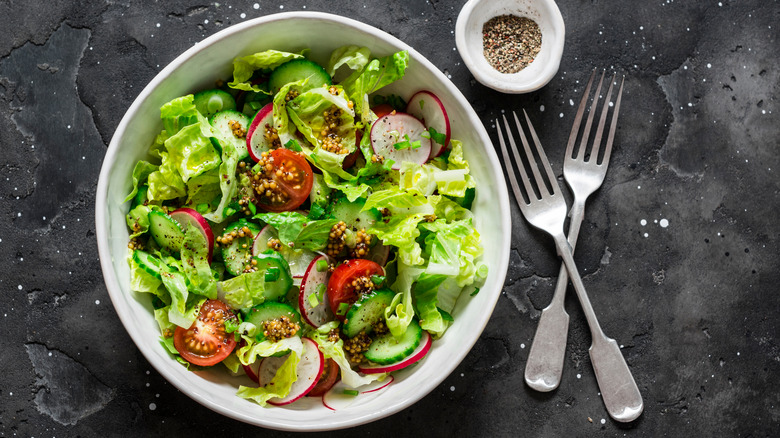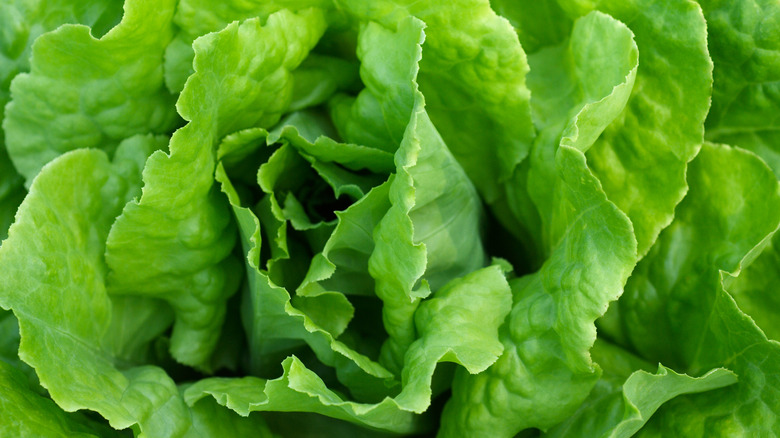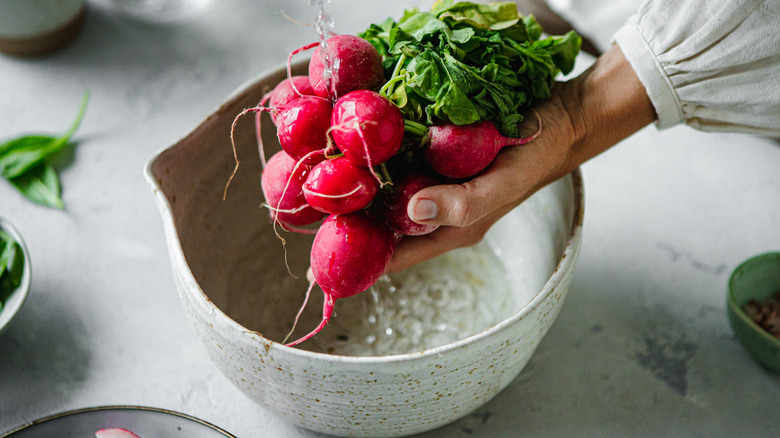Why An Expert Says Chilling Your Ingredients Can Make Or Break A Salad
Sometimes, the difference between a standout restaurant dish and its less stellar home-cooked counterpart is a matter of ingredients. Other times, it has to do with preparation. If you've ever wondered what magic must have occurred to make a restaurant's crisp chopped salad so fresh and flavorful, the answer often lies in the latter category.
That's certainly true of the salad lineup at As You Are, a restaurant, bar, and bakery that serves up "soulful modern American fare" inside Brooklyn's Ace Hotel. According to its Chef-Partner, Camille Becerra, a good salad is all about temperature. For one, Becerra shared with Daily Meal, "When you make a salad at a restaurant, there's a better understanding of the importance of a chilled plate."
You may have already known that a cold bowl is the secret to a tastier salad. Beyond the temperature of her tableware, Becerra's cool tip for a great salad is to stick the chilled greens and dressing — stored separately — in the freezer for two minutes right before tossing and serving.
A quick dip in the freezer
Becerra's freezer advice comes with a warning. "[I]f you forget by a few minutes, your salads freeze and you're left with no salad," she says. Set a timer so you don't forget.
Indeed, salad greens are one of the few foods you should never freeze for long periods of time. If you've ever tried, chances are you've been met with soggy, slimy results. Unlike more hearty vegetables like green beans and peas, lettuce has a high water content and delicate cell walls that can't hold up to the ice crystals that form at freezing temperatures. Defrosting results in limp leaves that you don't want anywhere near your salad. A quick couple of minutes in the freezer, however, will do your greens plenty of good.
Why chill your greens in the first place? The cold air will help eliminate any lingering moisture. If your greens are even slightly wet, they won't be as crisp and dressings will have a hard time clinging to them. After rinsing, toss your greens in a salad spinner to wick off the majority of their moisture, then wrap them in a damp paper towel — it sounds counterintuitive, but it helps absorb excess water — before placing them in the freezer.
Tips for a perfectly crisp salad
Before it comes time for that eleventh-hour trip to the freezer, there are other steps you can take to ensure your salad ingredients are as crisp as can be. First, let's talk lettuce.
When you bring home pre-bagged loose-leaf lettuce or a bundle of spinach, don't toss them in the crisper drawer right away. Instead, remove any slimy or wilted leaves, rinse and dry the remaining ones thoroughly, and store them in a lidded container lined with damp paper towels. A plastic bag works too — just be sure to leave a bit of air inside so the lettuce has room to breathe. Whole-head lettuce, on the other hand, doesn't need to be rinsed right away. Simply pluck off any damaged outer leaves and keep the head in your crisper drawer, wrapped in damp paper towels. Those properly stored greens should last in the fridge for up to a week, but the sooner you use them, the better.
Meanwhile, if you're using crunchy vegetables in your salad (think radishes, cucumber, fennel, asparagus, peas, and carrots), the path to crispness is even easier; all you need is an ice bath. Despite their rigid exterior, crunchy vegetables are full of water. Slicing them up and dropping them into a bowl of ice water for as little as five minutes (after which you'll want to pat them dry) locks in that juiciness and makes them even crunchier.


